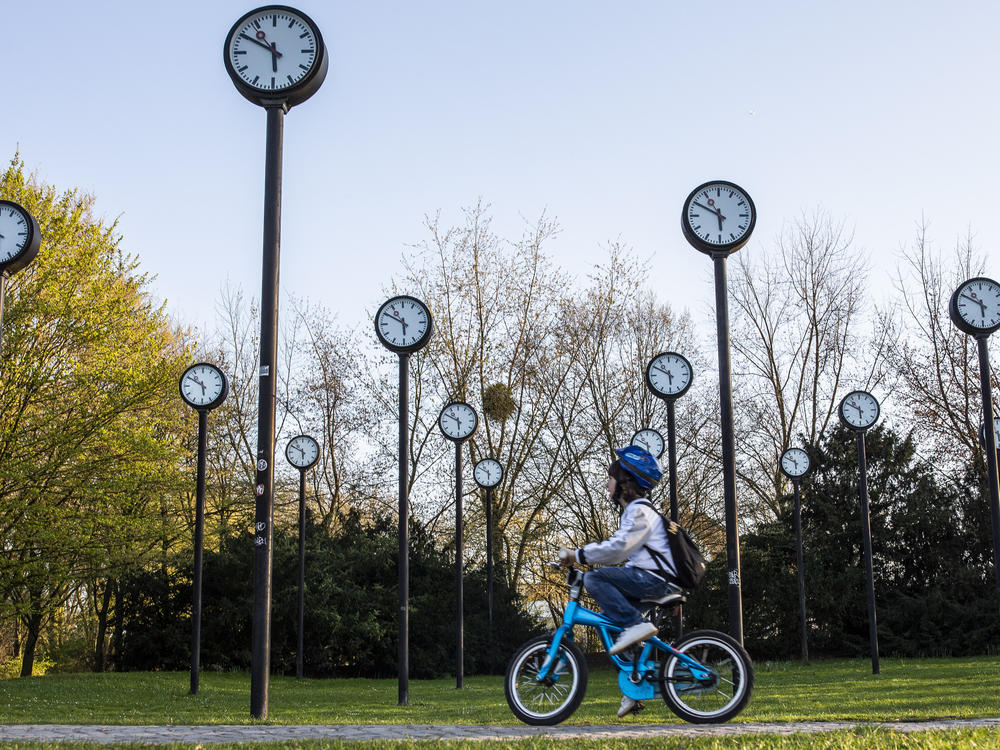Section Branding
Header Content
What to know about the political debate around daylight saving time
Primary Content
Twice a year, every year, the ritual returns as literal clockwork: the start and end of daylight saving time.
Millions of Americans, with grunts or glee, tap at their devices or wind their watch hands, manually — and mentally — changing the time to reflect a change in seasons.
In recent years, lawmakers have talked about this timeworn tradition being on its last legs. A raft of bills on the federal and state levels that take aim at the biannual time changes are waiting for action or stalled, at least for now.
Here's a look at where things stand.
What's the status of that Senate bill to end time changes?
In March 2022, the Senate passed the Sunshine Protection Act. The intent behind the bill was to make daylight saving time permanent starting in the spring of 2023.
And at first, it looked as though it might become a reality. The Senate passed the bill through an expedited process and with unanimous consent — legislative rarities in this day and age.
But the bill wasn't taken up in the House. Members cited higher priorities, like a budget deficit and the war in Ukraine, but there was also a growing chorus of criticism about the bill's approach (more on this below).
Sen. Marco Rubio, R-Fla., reintroduced the bill in March 2023, and it was sent to the Senate Committee on Commerce, Science and Transportation, but there has been no notable movement on it since. A companion bill, introduced by Rep. Vern Buchanan, R-Fla., is similarly stuck in committee at the House level.
Even if either bill manages to pass both chambers, it'd still need to be signed by President Biden, who hasn't indicated how he leans on the issue.
So for now, the tradition remains intact.
Who observes daylight saving time?
All states but two — Hawaii and Arizona (with the exception of the Navajo Nation) — observe daylight saving time. The U.S. territories of American Samoa, Guam, Puerto Rico, the Virgin Islands and the Northern Mariana Islands also don't change their clocks.
What's the argument against the Sunshine Protection Act?
When the Sunshine Protection Act was first debated in a House subcommittee, experts said switching to permanent daylight saving time would do everything: save lives, reduce crime, conserve energy and improve health.
And pretty much everyone agrees that ending the time changes is generally a good idea. Our bodies can be very sensitive to disruptions to our circadian rhythms.
But the medical community has taken issue with how the bill proposes to make the change — specifically, that it mandates all states adopt permanent daylight saving time rather than sticking to standard time.
Doctors and scientists argue that standard time is better for our health. Our internal clock is better aligned with getting light in the morning, which, in turn, sets us up for better sleep cycles.
The bill's sponsors aren't budging though. Rubio is still pushing for permanent daylight saving time.
And the biggest argument for this approach may be an economic one. The idea is that having more light in the evenings encourages people to go out and do things — i.e., spend money.
The nation's convenience stores, for example, told a congressional subcommittee that they see an uptick in spending when clocks are set to daylight saving time.
Could the states adopt their own time-change rules?
With federal legislation stuck in a holding pattern, states could take up the issue, but they're still subject to some federal limitations.
The Uniform Time Act, which was passed in 1966, says that states can enact permanent standard time but not permanent daylight saving time.
At least 550 bills and resolutions have surfaced concerning time changes at the state level in recent years, according to a tally from the National Conference of State Legislatures (NCSL). So the same debate that's happening at the federal level is playing out in statehouses across the United States.
Save Standard Time, a nonprofit that works to end daylight saving time, regularly updates a detailed chart with the exact status of state bills.
Which states are trying to end daylight saving time?
In 2023, at least 29 states considered legislation related to daylight saving time.
At least half of those states have enacted or passed measures pledging to switch to permanent daylight time if Congress changes the rules to allow for such an action.
Several of those states were also actively considering legislation that would end daylight saving time, but by switching the state to year-round standard time, according to the NCSL.
Last month, an Oregon bill to keep most of the state in Pacific Standard Time for the entire year didn't advance in the state's Senate. But supporters agreed to amend the bill to say that Oregon will end daylight saving time only if California and Washington make the same change within the next 10 years.
Lawmakers in Oregon's neighboring states of Idaho, California and Washington proposed similar bills.
When will daylight saving time end?
That'll be Sunday, Nov. 3. Mark your calendars.

